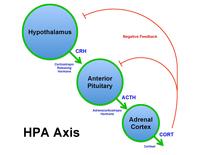
Opposing effects of memory-driven and stimulus-driven attention on distractor perception
Sign Up to like & getrecommendations! Published in 2017 at "Cognitive Processing"
DOI: 10.1007/s10339-017-0834-5
Abstract: It is well known that a match between working memory contents and a visual stimulus creates attentional bias toward the memory-matching stimulus. The present study investigated whether this memory-driven attentional bias exerts similar effects with… read more here.
Keywords: memory driven; attention; stimulus driven; driven attention ... See more keywords

Left hemispatial neglect and overt orienting in naturalistic conditions: Role of high-level and stimulus-driven signals
Sign Up to like & getrecommendations! Published in 2019 at "Cortex"
DOI: 10.1016/j.cortex.2018.12.022
Abstract: Deficits of visuospatial orienting in brain-damaged patients affected by hemispatial neglect have been extensively investigated. Nonetheless, spontaneous spatial orienting in naturalistic conditions is still poorly understood. Here, we investigated the role played by top-down and… read more here.
Keywords: neglect patients; orienting naturalistic; spatial orienting; naturalistic conditions ... See more keywords

Goal-directed and stimulus-driven selection of internal representations
Sign Up to like & getrecommendations! Published in 2020 at "Proceedings of the National Academy of Sciences of the United States of America"
DOI: 10.1073/pnas.2013432117
Abstract: Significance Everyday behavior relies on continuously selecting relevant information from the external environment as well as from internal representations in working memory. In describing the selection of external objects, a longstanding distinction is proposed between… read more here.
Keywords: selection; internal representations; goal directed; stimulus driven ... See more keywords

Functional Differentiation of Dorsal and Ventral Posterior Parietal Cortex of the Rat: Implications for Controlled and Stimulus-Driven Attention.
Sign Up to like & getrecommendations! Published in 2021 at "Cerebral cortex"
DOI: 10.1093/cercor/bhab308
Abstract: The posterior parietal cortex (PPC) is important for visuospatial attention. The primate PPC shows functional differentiation such that dorsal areas are implicated in top-down, controlled attention, and ventral areas are implicated in bottom-up, stimulus-driven attention.… read more here.
Keywords: cortex; attention; ppc; functional differentiation ... See more keywords

Linguistic Skill and Stimulus-Driven Attention: A Case for Linguistic Relativity
Sign Up to like & getrecommendations! Published in 2022 at "Frontiers in Psychology"
DOI: 10.3389/fpsyg.2022.875744
Abstract: How does the language we speak affect our perception? Here, we argue for linguistic relativity and present an explanation through “language-induced automatized stimulus-driven attention” (LASA): Our respective mother tongue automatically influences our attention and, hence,… read more here.
Keywords: driven attention; language; linguistic relativity; stimulus driven ... See more keywords